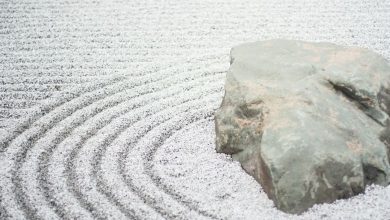How to Maintain a Healthy Lawn?

A well-maintained lawn not only adds aesthetic appeal to your home but also provides a space for outdoor activities and relaxation. However, achieving and maintaining a healthy lawn requires effort and proper care. In this article, we will discuss some essential tips on how to maintain a healthy lawn.
Choosing the Right Grass
The first step in maintaining a healthy lawn is to choose the right type of grass. Different types of grass have varying requirements for sunlight, water, and temperature. Consider factors such as climate, soil type, and how much foot traffic your lawn receives before selecting the grass variety that is most suitable for your area.
Proper Mowing
Mowing is a crucial aspect of lawn maintenance. To ensure a healthy lawn, it is important to mow at the correct height and frequency. Set your mower blades to a height that allows the grass to stay between 2.5 to 3 inches tall. Mowing too short can stress the grass and make it more susceptible to pests and diseases. Additionally, avoid cutting more than one-third of the grass blade length at a time, as this can shock the grass and hinder its growth.
Regular Watering
Watering your lawn regularly is essential for its health. Water deeply and infrequently to encourage deep root growth. This helps the grass become more drought-tolerant and resilient. Watering in the early morning or late afternoon is ideal, as it allows the grass to dry before evening, reducing the risk of diseases. Aim to provide about 1 inch of water per week, including rainfall. Use a rain gauge to monitor the amount of water your lawn receives.
Fertilizing
Fertilizing your lawn is important to provide it with essential nutrients. Choose a high-quality slow-release fertilizer and apply it according to the instructions on the package. Avoid over-fertilizing, as it can cause excessive growth and make the grass more susceptible to diseases. It is also recommended to perform a soil test to determine the specific nutrient needs of your lawn, as different areas may require different types and amounts of fertilizer.
Weed Control
Weeds can quickly invade and take over a healthy lawn. Regular weed control is necessary to prevent their growth and maintain the health of your grass. Use a pre-emergent herbicide in early spring to prevent weed seeds from germinating. For existing weeds, use a post-emergent herbicide that targets the specific types of weeds present. Spot-treat weeds rather than applying herbicides to the entire lawn to minimize the impact on desirable grass.
Aeration
Lawn aeration involves creating small holes in the soil to allow air, water, and nutrients to reach the grassroots. This helps to relieve soil compaction and promote healthy root growth. Aerate your lawn once or twice a year, preferably in the spring or fall when the grass is actively growing. You can use a manual or power aerator, or hire a professional lawn care service to perform the task for you.
Pest and Disease Control
Pests and diseases can cause significant damage to your lawn if left unchecked. Regularly inspect your lawn for signs of pests such as grubs, chinch bugs, or armyworms. If detected, use an appropriate insecticide to control the infestation. Likewise, keep an eye out for signs of diseases such as brown patches or fungal growth. Apply fungicides as needed to prevent the spread of diseases and maintain a healthy lawn.
Conclusion: Enjoy Your Lush Green Lawn
Maintaining a healthy lawn requires dedication and consistent care. By choosing the right grass variety, mowing correctly, watering adequately, fertilizing appropriately, controlling weeds, aerating the soil, and monitoring for pests and diseases, you can enjoy a lush green lawn that enhances the beauty of your home. Remember to adapt your lawn care practices to the specific needs of your area and consult with professionals if needed. With proper maintenance, your lawn will thrive and provide a welcoming outdoor space for years to come.




